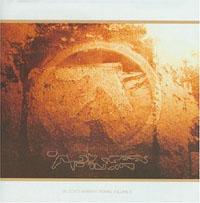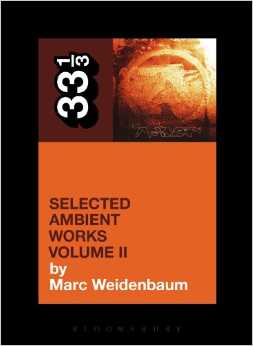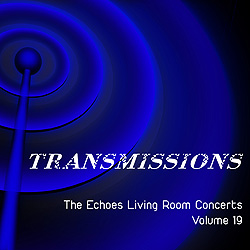 I’m in a state right now where 20 year anniversaries don’t seem like such a big deal. After all, we just commemorated the 30th Anniversary of Steve Roach’s Structures from Silence and the 40th Anniversaries of Pink Floyd’s Dark Side of the Moon and Mike Oldfield’s Tubular Bells. I think that divide might say something about how you feel about Aphex Twin’s Selected Ambient Works Volume II. If you’re on the far side of the divide, you, like me, might think that it was a fairly slight album, full of obviously derivative influences from Brian Eno, Jon Hassell, Philip Glass and old musique concrète and early electronic music. If you’re on the nearside of the divide however, you might see this as a magnum opus, an album that signaled a new way of approaching music and listening, an ambient manifesto that is still resonating today.
I’m in a state right now where 20 year anniversaries don’t seem like such a big deal. After all, we just commemorated the 30th Anniversary of Steve Roach’s Structures from Silence and the 40th Anniversaries of Pink Floyd’s Dark Side of the Moon and Mike Oldfield’s Tubular Bells. I think that divide might say something about how you feel about Aphex Twin’s Selected Ambient Works Volume II. If you’re on the far side of the divide, you, like me, might think that it was a fairly slight album, full of obviously derivative influences from Brian Eno, Jon Hassell, Philip Glass and old musique concrète and early electronic music. If you’re on the nearside of the divide however, you might see this as a magnum opus, an album that signaled a new way of approaching music and listening, an ambient manifesto that is still resonating today.
 Author Marc Weidenbaum falls on the near side of that equation. He’s a music journalist who was an editor of Pulse Magazine for several years where I was a writer. Now he publishes the Disquiet webzine. Born in 1966, he’s perhaps just slightly too young to have experienced firsthand the early ambient music of the late 1970s and early 80s. But Weidenbaum is an erudite and voracious music listener who knows his music history. He thinks Selected Ambient Works Volume II is so significant, that he’s written an entire book on it in the 33 1/3 series, also just called Selected Ambient Works Volume II. You can hear him talk about it tonight on Echoes.
Author Marc Weidenbaum falls on the near side of that equation. He’s a music journalist who was an editor of Pulse Magazine for several years where I was a writer. Now he publishes the Disquiet webzine. Born in 1966, he’s perhaps just slightly too young to have experienced firsthand the early ambient music of the late 1970s and early 80s. But Weidenbaum is an erudite and voracious music listener who knows his music history. He thinks Selected Ambient Works Volume II is so significant, that he’s written an entire book on it in the 33 1/3 series, also just called Selected Ambient Works Volume II. You can hear him talk about it tonight on Echoes.
Here’s one of the stories that was too long for the feature piece. If you bought Selected Ambient Works Volume II when it came out, there were no titles. Only a matrix of enigmatic pie charts matched with enigmatic photos, usually very tight fragments of larger objects. In print, the titles were simply “Track 1: (Untitled),” “Track 2: (Untitled)” etc. or just “#1,” “#2,” “#3” etc. But now, when I put that same 1994 CD into the computer, Grace Notes actually pulls up track names like “Rhubarb” and “Grey Stripe.” This is one of the stories Marc Weidenbaum tracked down.
MW: Yeah it’s funny, it depends generationally as to when you experience the record as to how prominent those titles are. The story of the titles, for people who are unfamiliar with the record, the way it’s structured is that when you purchase the album physically and it just came out on CD, and cassette and vinyl, there was a large image in the center spread that was a bunch of circles. And each circle, you figured out, correlated with a side of the album and the relative size of a piece slice of that circle helped you figure out which track was associated with it. In fact, it didn’t technically have word titles, one of the tracks, “Blue Calyx,” retained a title from being released previously by him as a single. But all the other tracks are, and including “Blue Calyx,” are associated with pictures that appear on this same center spread. And each of those pictures is of an object.
Early on in the record’s release, some fans recognized what those objects were and produced a list of them, and very quickly they became, for certain types of listeners, the way those tracks were referred to because it became very difficult online, which is where a lot of communication about esoteric music too place in the early and mid ‘90s, especially, to identify the pieces. There was, there became a shorthand, so you could refer to a track as “Domino,” you could refer as “Rhubarb” or “Radiator.”And as for Grace Note, I was so fascinated by the way that those track titles are distributed that I tracked down someone from Grace Note, a very senior person on the editorial staff there. And she talked me through the process. And what’s really interesting is that the way that Grace Note manages that data kind of privileges these fan titles over the original titles because it’s very difficult in their database at the way it’s been structured since the ‘90s when it was first developed, to deal with null entries. And so it actually privileges names over null entries, so these words have gotten out there.
And just one little side note, as I was working on the, when I was working on the book, I looked at iTunes and in fact on iTunes in the middle of last year, the titles were still reproduced with these name titles, not with the original factual titles. And I tried to contact Apple to get an explanation and I never heard back from them, but very shortly after I got in touch with Apple about this, the album Selected Ambient Works Volume II disappeared in America from the iTunes record store and was gone for quite some time. And eventually it came back with blank titles. I don’t know if it was just coincidence or what, but it was fascinating that it went away.
Hear more stories of Aphex Twin’s Selected Ambient Works Volume II tonight on Echoes.
John Diliberto (((echoes)))
 Join the Echoes CD of the Month Club. and get Lyla Foy’s Mirrors the Sky, the April CD of the Month. You’ll get great CDs and help support Echoes at the same time. You can do it all right here.
Join the Echoes CD of the Month Club. and get Lyla Foy’s Mirrors the Sky, the April CD of the Month. You’ll get great CDs and help support Echoes at the same time. You can do it all right here.
OR
Pick Up TRANSMISSIONS:
THE ECHOES LIVING ROOM CONCERTS VOLUME 19
 Join us on Facebook where you’ll get all the Echoes news so you won’t be left behind when Dead Can Dance appear on the show, Tangerine Dream tours or Brian Eno drops a new iPad album. Or Follow us on Twitter@echoesradio.
Join us on Facebook where you’ll get all the Echoes news so you won’t be left behind when Dead Can Dance appear on the show, Tangerine Dream tours or Brian Eno drops a new iPad album. Or Follow us on Twitter@echoesradio.
Now you can go Mobile with Echoes On-Line. Find out how you can listen to Echoes 24/7 wherever you are on your iPhone, iPad or Droid.
